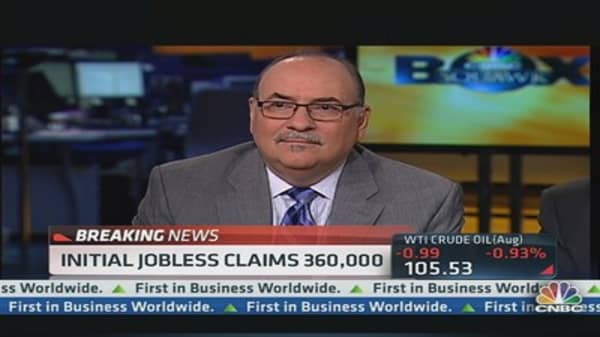A Labor Department analyst said there was nothing otherwise unusual in the data and that no states had provided estimates.
Even with the increase, the number of layoffs remains in the range of the levels seen over the last year, and is consistent with a continued drop in the unemployment rate.
The four-week moving average of new claims, which is considered a better measure of labor market conditions, increased by a more modest 6,000 to 351,750.
Economists polled by Reuters had expected first-time applications to fall to 340,000 last week. Claims for the prior week were revised to show 1,000 more applications received than previously reported.
The U.S. labor market has shown signs of strength in recent weeks, with 195,000 jobs added to payrolls in June. This has cemented expectations the Federal Reserve will start winding down its massive stimulus program as early as September.
Minutes to the Fed's June meeting released on Wednesday showed about half of its policymakers felt the U.S. central bank's bond-buying stimulus should be brought to a halt by year end, but many wanted reassurance the U.S. jobs recovery was on solid ground before any policy retreat.
The claims report showed the number of people still receiving benefits under regular state programs after an initial week of aid rose 24,000 to 2.98 million in the week ended June 29.




